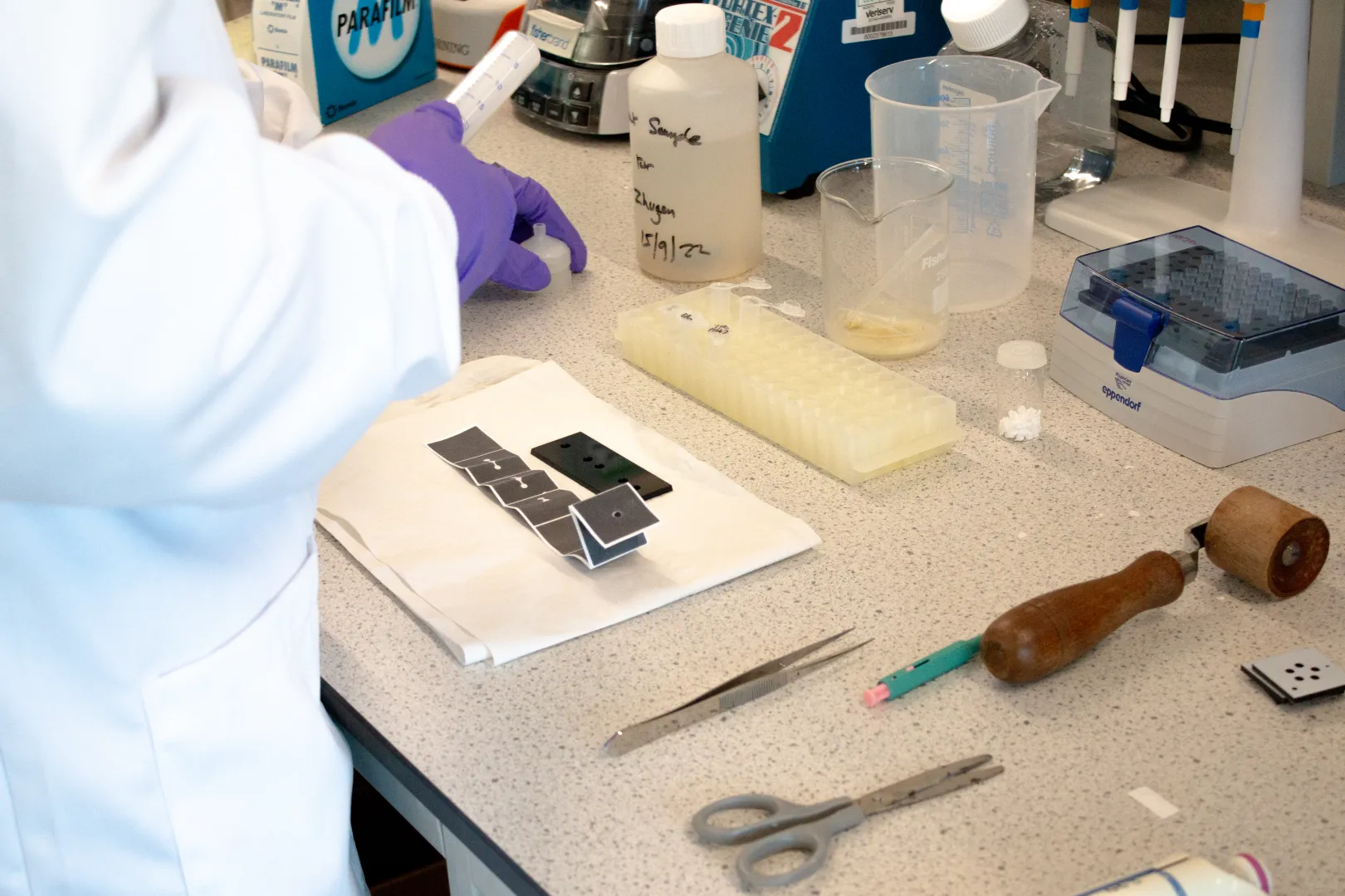In a significant medical breakthrough, scientists have discovered a novel treatment that targets bone cancer cells with astonishing precision.
This new approach involves using bioactive glasses combined with gallium, a highly toxic element.
Remarkably, this treatment can kill 99% of osteosarcoma cells without affecting non-cancerous bone cells.
Gallium, known for its toxicity, has a unique property that researchers have leveraged to their advantage.
Cancer cells, described as ‘greedy’, absorb the gallium, leading to self-destruction. In contrast, healthy cells remain unharmed.
This selective targeting showcases the potential of gallium-infused glasses to become a revolutionary treatment for bone cancer.
The research, led by Professor Richard Martin at Aston University, involved extensive laboratory tests.
These tests demonstrated that gallium-doped bioactive glasses could eliminate cancerous cells effectively.
Moreover, these glasses exhibited early signs of bone regeneration when incubated in simulated body fluid for just seven days.
Osteosarcoma, the most common primary bone cancer, primarily affects children and young adults.
Despite advancements in chemotherapy and surgical techniques, survival rates have not significantly improved since the 1970s.
This new approach offers a glimmer of hope for better outcomes and fewer side effects.
Bioactive glasses have long been used in bone repair and regeneration.
However, their potential to be doped with gallium for cancer treatment is a novel application that could revolutionize osteosarcoma therapy.
By targeting cancer cells while promoting bone growth, this treatment offers a dual benefit that was previously unattainable.

The findings, published in the journal Biomedical Materials, highlight the critical role of gallium and bioactive glasses in creating a more effective localized treatment.
Beyond its anti-cancer properties, the research noted the formation of an amorphous calcium phosphate/hydroxyapatite layer on the bioactive glass particals, signaling new bone growth.
The next steps for Professor Martin’s team involve two main fronts: further testing the anti-cancer properties of this material on bone metastatic cells and developing a minimally invasive injectable paste for bone cancer treatment.
This continued research aims to refine the treatment for clinical use.
While previous research yielded a 50% success rate, the current 99% effectiveness is an impressive leap forward.
However, more funding is needed to advance clinical trials and bring this promising treatment to patients worldwide.
The potential of gallium-infused bioactive glasses represents a paradigm shift in cancer treatment.
If successful in further trials, this method could reduce the adverse side effects commonly associated with existing cancer treatments and improve survival rates for osteosarcoma patients.
As research progresses, there is growing anticipation in the medical community. This breakthrough represents a significant stride towards better, more targeted cancer therapies that not only attack the disease but also support the body’s natural healing processes.
